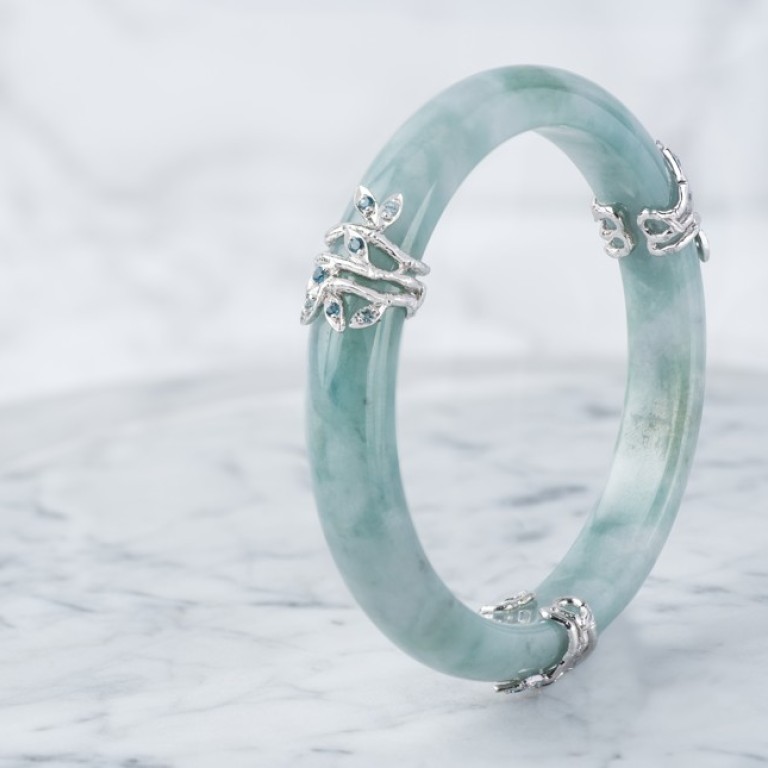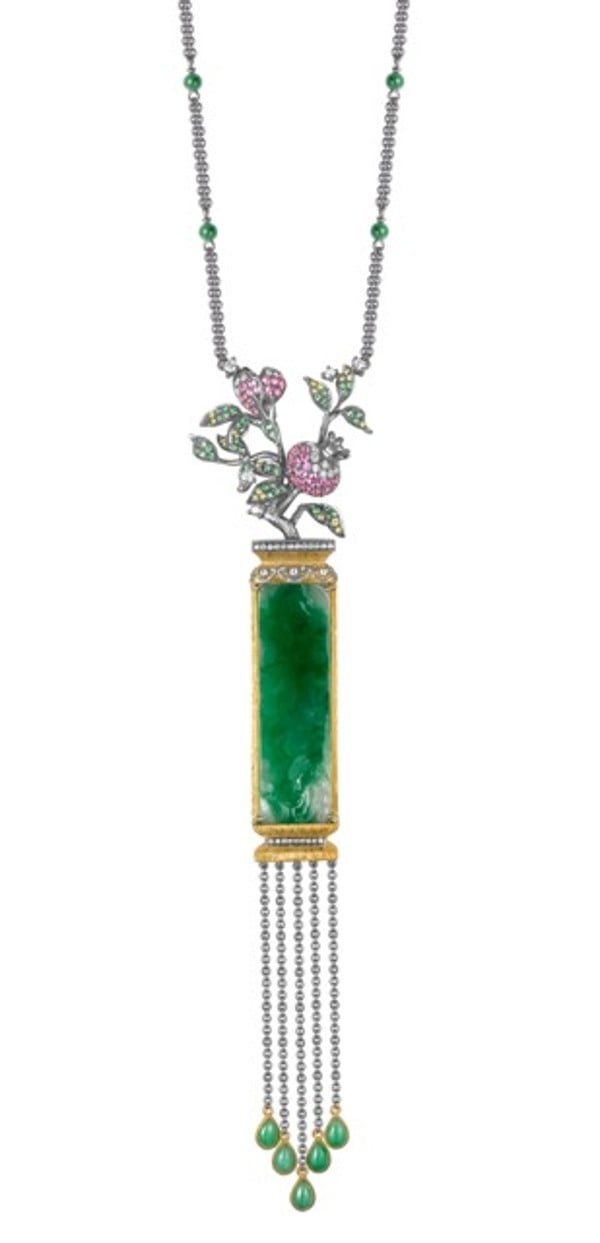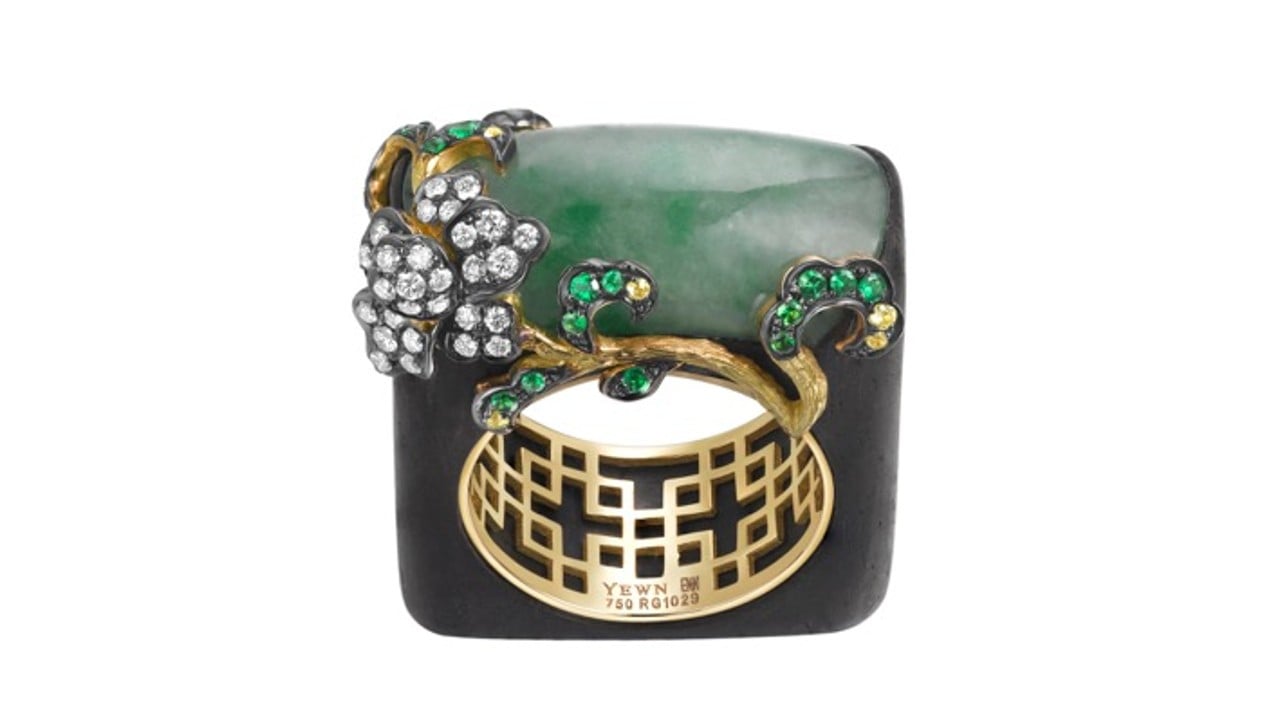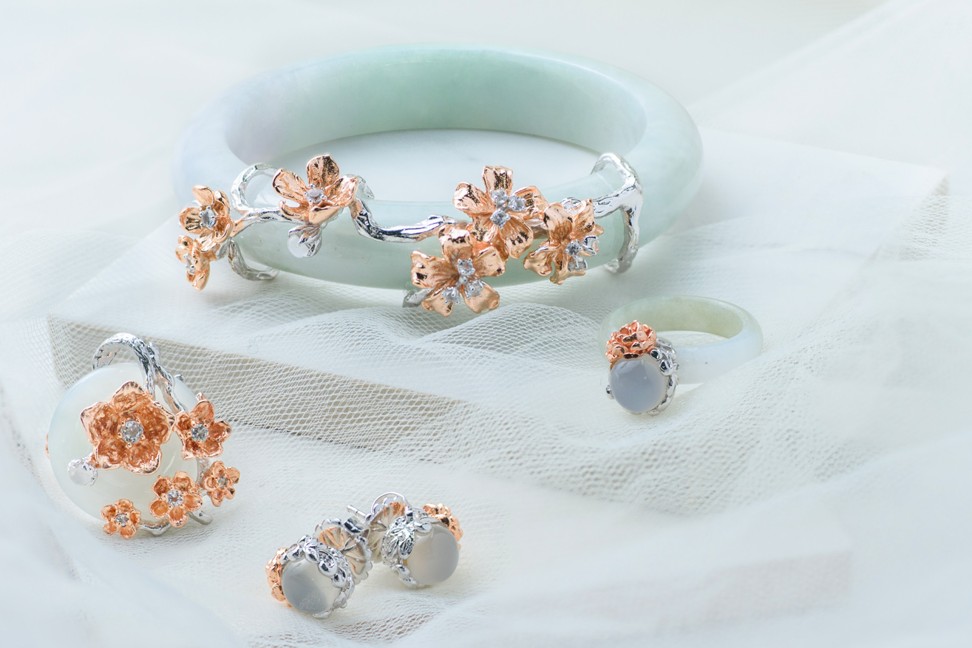Jade jewellery enters the spotlight as creative forms find wider appeal

Holly Golightly, played by Audrey Hepburn in Breakfast at Tiffany’s, had her pearl necklace; Kate Middleton has her sapphire engagement ring; and every Chinese mother has her jade bangle.
Traditionally, a semi-translucent, intense medium green colour of jade, called imperial jade, is most prized for jade bangles. Apple green jade is seen as a suitable, less expensive alternative to imperial jade. But the stone comes in a multitude of shades and colours – from the warm reds, oranges, yellows and browns, to white, black and lavender.
The term “jade” is also an umbrella term, used colloquially to refer to two gems of different mineral compositions – the more expensive jadeite and the more common, and thus less expensive, nephrite.
In recent years, however, jewellery designers have started to throw traditional colour and quality preferences out the window. Not only are the non-traditional shades of jade finally getting their moment in the spotlight, the stone is also getting a chance to shine in forms more exciting than the simple bangle.

And the way Yewn usually likes his jade cut is into flat slabs – a style which is one of the cutters’ least favourite, due to the large amount of rough it wastes. Yewn’s most renowned piece featuring such a cut is probably the ring from his Chinese Lattice collection seen on former US first lady Michelle Obama in 2011, which sported a rectangular slab of green jade sitting atop a latticed square shank set with diamonds.

Following the success of that ring, which propelled him to international fame, Yewn’s work with jade pieces has become progressively bolder. A ring from his Imperial Grace collection, for example, repurposes a fragment of jade broken from a traditional bangle as the centre stone.
Couture jeweller Wendy Yue is another designer with a strong affinity for jade. In her extravagant creations, jade is transformed into floral sculptures, which bloom on gardens of pave-set coloured gems or take centre stage as large stones on cuffs, while the slabs are engraved with floral designs and framed by tendrils of gold set with multi-coloured stones.
“I don’t tend to choose jade based on the traditional quality standards for colour,” Yue says. “I’ve cut and carved jade into every shape possible, to use as dangling earrings, cuff centres, wings of a dragonfly, and perfume snuff bottles. I think the key is to appreciate how jade can be used in unconventional ways and shapes, and is itself a medium for artistic expression.”
In Cartier’s Rings of Saturn décor visible hour watch, a ring of smooth black jade is paired with a ring fully-paved in brilliant and rose-cut diamonds, forming a bold juxtaposition of white against black, and pebbled against smooth textures. Black jade also features strongly in De Grisogono’s Tubetto collection, most often as a contrast to white gold and diamonds.

Perhaps most indicative of jade’s successful migration from the wrists of Chinese mothers to the fashionable accessories drawers of young women is Singaporean designer Choo Yilin’s Si Dian Jin collection. Traditionally, si dian jin is a four-piece set of 24ct yellow gold jewellery given by the groom’s mother to the bride at her wedding. However, in Choo’s interpretation, gold is only used to provide accents to the flowers or vines twisting elegantly around jade. White, smoky grey, and light green jade are favoured, resulting in bridal pieces that are more easily transformed into everyday jewellery than those made of 24ct gold.


The gem is gaining new fans among the younger generation as jewellers discover new ways to bring out the best its best qualities